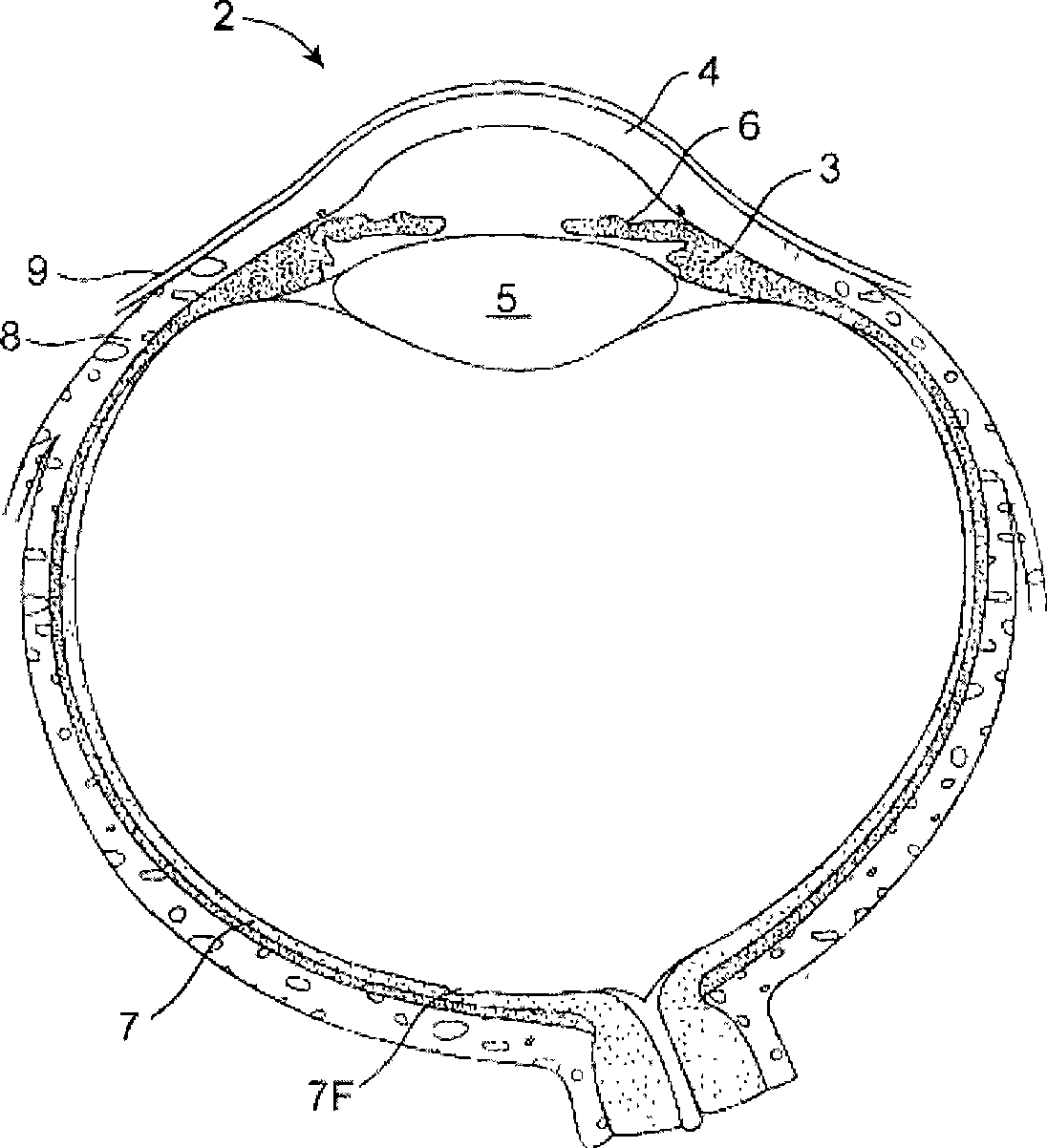Nasolacrimal drainage system implants for drug therapy
A technology of implants and therapeutic agents, applied in the field of implants, can solve problems such as blindness, vision loss in patients, and implants without drugs being delivered.
- Summary
- Abstract
- Description
- Claims
- Application Information
AI Technical Summary
Problems solved by technology
Method used
Image
Examples
Embodiment Construction
[0079] Picture 1-1 and Figure 1-2 The anatomical structure of the eye 2 suitable for treatment with the implant according to an embodiment of the present invention is represented. The eye 2 includes the cornea 4 and the iris 6 . The sclera 8 surrounds the cornea 4 and the sclera 6 and appears white. The conjunctival layer 9 is substantially transparent and lies over the sclera 8 . The lens 5 is located in the eye. The retina 7 is located near the back of the eye 2 and is generally sensitive to light. The retina 7 includes the fovea 7F which provides high visual acuity and color vision. The cornea 4 and the lens 5 refract light to form an image on the fovea 7F and the retina 7 . The optical power of the cornea 4 and lens 5 facilitates image formation on the fovea 7F and retina 7 . The relative positions of the cornea 4, lens 5 and fovea 7F are also important for image quality. For example, eye 2 may be myopic if eye 2 grows from the axis of cornea 4 to retina 7F. Furt...
PUM
| Property | Measurement | Unit |
|---|---|---|
| Cross section | aaaaa | aaaaa |
Abstract
Description
Claims
Application Information
 Login to View More
Login to View More - R&D
- Intellectual Property
- Life Sciences
- Materials
- Tech Scout
- Unparalleled Data Quality
- Higher Quality Content
- 60% Fewer Hallucinations
Browse by: Latest US Patents, China's latest patents, Technical Efficacy Thesaurus, Application Domain, Technology Topic, Popular Technical Reports.
© 2025 PatSnap. All rights reserved.Legal|Privacy policy|Modern Slavery Act Transparency Statement|Sitemap|About US| Contact US: help@patsnap.com



